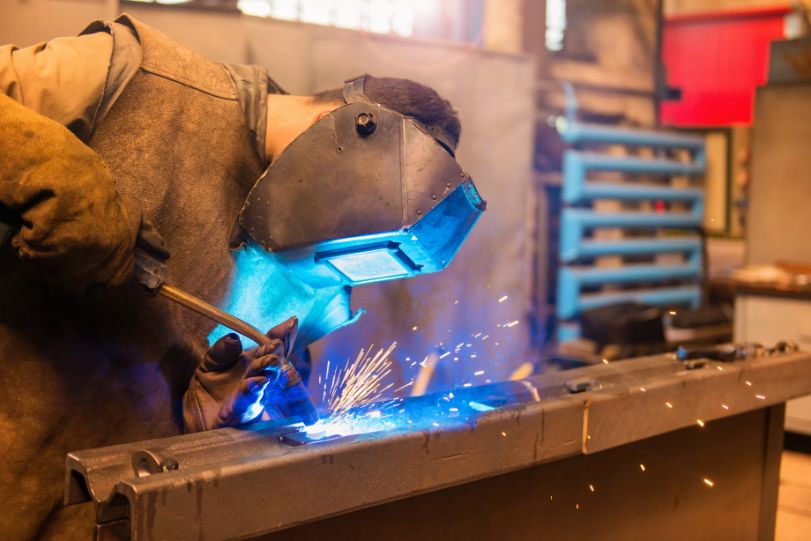Why a Welding WPS is Crucial: Enhancing Consistency and Compliance
Why a Welding WPS is Crucial: Enhancing Consistency and Compliance
Blog Article
The Ultimate Guide to Welding WPS Procedures: A Detailed Summary for Welders
In the intricate world of welding, Welding Procedure Requirements (WPS) offer as the backbone of making certain quality, uniformity, and safety in welding operations (welding WPS). As we dive right into the various components of a WPS and explore the details of credentials and certification, we will certainly reveal the crucial role these treatments play in the world of welding.
Significance of WPS Procedures
Recognizing the value of Welding Procedure Specifications (WPS) treatments is important for guaranteeing the top quality and integrity of bonded frameworks. WPS treatments act as a roadmap for welders, outlining the essential steps, parameters, and products needed to achieve an audio weld. By adhering to WPS standards, welders can guarantee consistency in their job, bring about reliable and structurally audio welds.
One of the key reasons WPS procedures are important is their role in keeping weld top quality and integrity. Complying with the specified welding parameters and strategies outlined in the WPS aids prevent issues such as porosity, splitting, or insufficient fusion, which can endanger the toughness and sturdiness of the weld. Furthermore, WPS treatments are vital for making certain compliance with sector requirements and codes. By complying with established WPS guidelines, welders can show that their work satisfies the necessary demands for safety and security and high quality, providing assurance to customers, assessors, and regulatory bodies. Fundamentally, the importance of WPS procedures can not be overemphasized, as they are essential to attaining regular, high-grade welds that meet market requirements and requirements.

Parts of a WPS
A Welding Procedure Specification (WPS) typically makes up important components that detail the specific requirements for executing a weld, making certain uniformity and top quality in the welding procedure. The key parts of a WPS consist of important variables such as base steels, filler steels, preheat and interpass temperature levels, welding procedures, protecting gases, welding positions, and post-weld warmth therapy demands.
Base metals refer to the materials being joined, while filler steels are utilized to load the space in between the base steels during welding. The welding process outlines the particular strategy to be utilized, whether it's gas metal arc welding (GMAW), protected steel arc welding (SMAW), or one more technique. Welding settings define the positionings in which welding can be carried out.

Qualification and Certification
Having actually established the essential elements of a Welding Procedure Specification (WPS), the emphasis currently shifts in the direction of the vital facets of credentials and qualification in welding methods.
:max_bytes(150000):strip_icc()/MIG20welding20arc20in20action-2000-e8844d72f5094d408b5ab6f1c9436a4f.jpg)
Certification, on the various other hand, is the formal acknowledgment of a welder's credentials by an Check Out Your URL appropriate qualification body or organization. Welding accreditations are commonly based on the details welding processes, materials, and placements a welder is Clicking Here qualified to collaborate with. Holding a legitimate welding accreditation demonstrates that a welder satisfies sector standards and is qualified to execute welding tasks to the called for requirements.
Producing a WPS
To establish a Welding Treatment Spec (WPS) that satisfies market criteria, cautious consideration of welding processes, materials, and functional specifications is crucial (welding WPS). The primary step in developing a WPS is to identify the welding procedure to be utilized, such as gas metal arc welding (GMAW) or protected steel arc welding (SMAW) As soon as the welding procedure is identified, the following important facet is picking the appropriate materials, considering variables like base steel type, density, and joint layout. Operational parameters such as welding present, voltage, travel speed, and protecting gas make-up have to additionally be meticulously defined in the WPS.

Executing and Monitoring WPS
Upon finalizing the thorough Welding Procedure Specification (WPS) that meticulously details welding processes, products, operational specifications, and top quality assurance procedures, the focus shifts to efficiently carrying out and checking the established treatments. Execution includes ensuring that all welders entailed in the job are familiar with the WPS and follow it meticulously throughout the welding procedure. Effective implementation and monitoring of the WPS are crucial for making sure the honesty, toughness, and safety and security of the bonded joints, eventually adding to the general success of the welding job.
Conclusion
To conclude, understanding and complying with Welding Procedure Specs (WPS) is crucial for welders to make sure quality, consistency, and security in their work. By recognizing the parts of a WPS, obtaining proper credentials and qualifications, developing in-depth treatments, and executing and checking them effectively, welders can improve their abilities and effectiveness in welding practices. Sticking to WPS treatments is necessary for creating top notch welds and conference market standards.
In the complex world of welding, Welding Treatment Specifications (WPS) offer as the backbone of ensuring top quality, consistency, and safety in welding procedures. The welding process describes the details method to be used, whether it's gas steel arc welding (GMAW), protected metal arc welding (SMAW), or another method.To develop a Welding Treatment Specification (WPS) that fulfills industry standards, mindful factor to consider of welding processes, materials, and functional criteria is essential. The initial step in developing a WPS is to determine the welding process to be used, such as gas steel arc welding (GMAW) or secured steel arc welding (SMAW)Upon settling the thorough Welding Treatment Specification (WPS) that carefully details welding procedures, products, operational criteria, and high quality assurance procedures, the emphasis shifts to effectively carrying out and monitoring Discover More Here the established procedures.
Report this page